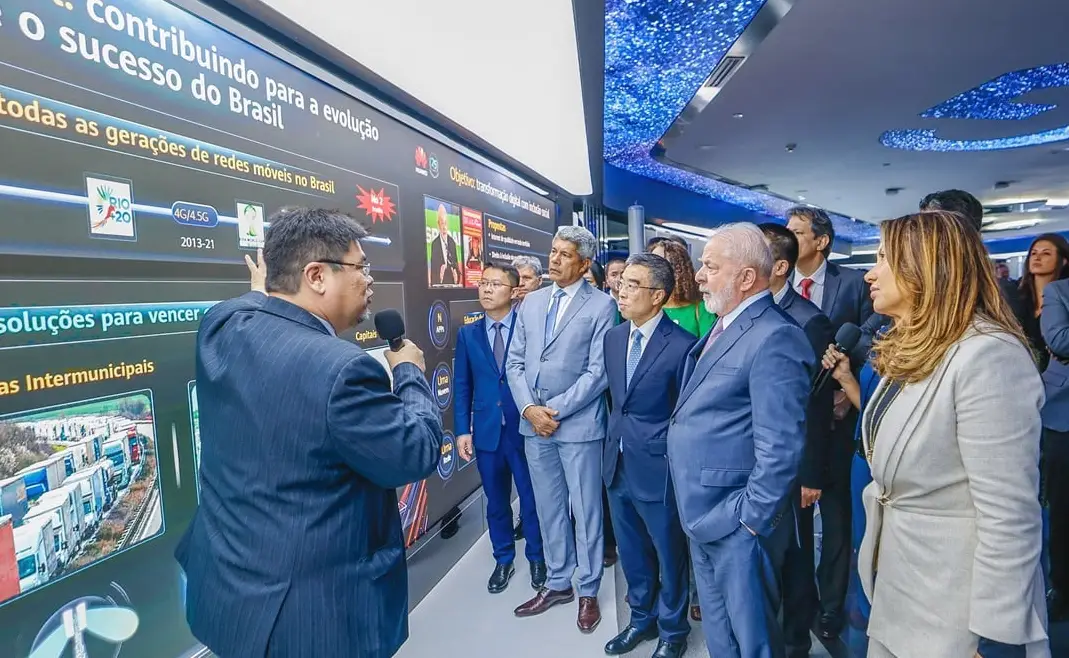Since the mid-2000s, when Chinese companies began expanding internationally—a process that accelerated toward the decade’s end—Brazil has emerged as the primary destination for the Asian giant’s investments in Latin America. Globally, it ranks among the top five recipients of Chinese productive capital. In just over 15 years of sustained activity, Chinese investments have reached all regions of Brazil, spanning large urban centers, capital cities, and even small towns in rural areas.
During this period, there have been changes in the profile of the projects that have attracted Chinese interest, whether due to the domestic policies adopted by Beijing, to moments of greater or lesser openness of the Brazilian market, or due to turbulence in the international scenario. Initially, reflecting the exponential growth of bilateral trade, there was great enthusiasm for the raw materials sector, especially in the area of oil extraction. Today, some of the largest Chinese companies in the sector are present in Brazil, such as China National Offshore Oil Corporation (CNOOC), China Petrochemical Corporation (Sinopec) and China National Petroleum Corporation (CNPC).
Secondly, the energy area — especially the generation, transmission, and distribution of electricity — began to attract most of the projects, especially with the entry of giants such as State Grid and China Three Gorges, which have Brazil as their main market outside China. At the same time, the manufacturing industry gained space, with the entry of Chinese companies from various segments, such as automotive, home appliances and machinery and equipment, including BYD, TCL, Gree, Midea, Sanxing Electric and Xuzhou Construction Machinery Group (XCMG).
In addition, there are consolidated investments in the mining sector, with the presence of large CMOC initiatives in the area of niobium and phosphates, and in the agricultural segment, with contributions from companies such as COFCO and Long-Ping High-Tech, ranging from the marketing and supply of agricultural products to the manufacture of chemicals for agribusiness. In the infrastructure segment, investments by state-owned companies also stand out, with the Paranaguá Container Terminal in its portfolio since 2018.
The growth of bilateral trade and the inflow of investments have, in turn, generated a growing interest in the banking sector, which has gradually begun to operate directly in the country. In the first decade of the 2000s, the presence of Chinese banks was still incipient, with basically the Bank of China, a pioneer in the presence of these institutions in South America. Then, in 2009, it was established as Banco de China Brasil S.A., the first Chinese bank to effectively enter the national territory. As of 2012, other banks began to operate in the country, such as the Industrial and Commercial Bank of China (ICBC), the Bank of Communications (BOCOM) and the China Construction Bank (CCB).
It is worth noting that slightly more than half of the Chinese projects in Brazil entered the country through greenfield initiatives, with the establishment of new businesses or new rounds of investment in projects initiated in previous years. This has generated numerous benefits for the Brazilian economy, as it creates connectivity networks between value chains, in addition to boosting the labor market. At the same time, many Chinese companies have also opted to enter the country through mergers and acquisitions, taking advantage of specific benefits, such as the relative fall in domestic asset prices due to the devaluation of the real.
The trajectory of Chinese investments in Brazil shows that relations in this area have reached a considerable degree of maturity, with a rapid evolution — quantitative and qualitative — of these investments, which has prepared solid bases for the new trends that are beginning to emerge. Today, China’s large overseas investment projects are less frequent, giving way to smaller ventures in so-called “new infrastructure”, with initiatives in areas that are at the core of the Chinese leadership’s development plans, such as renewable energy, electric cars, information technology, urban infrastructure and high-standard manufacturing.
In this scenario, new opportunities have arisen for Brazil. Recently, there has been a renewed enthusiasm on the part of Chinese IT companies to invest capital in the country, including participations in several rounds of investment in domestic startups, paving the way for the expansion of technology giants such as DiDi, Tencent and Ant Financial.
Similarly, areas related to energy transition have sparked the interest of Chinese companies, in line with China’s goal of achieving carbon neutrality by 2060, an ambition that will necessarily require the help of allies in various parts of the world. The recent entry of GWM and BYD into the domestic market illustrates emblematic cases. Moreover, the entry of new projects in clean energy, especially solar and wind, is increasingly common, with latent opportunities in areas such as green hydrogen, biofuels for aviation and shipping, as well as the extraction and processing of critical minerals such as lithium.
The progress of Chinese investments in Brazil is remarkable. Within the framework of a common agenda based on sustainable and technological development, Brazil and China can take new steps towards partnerships that strengthen not only bilateral relations, but also their position in the world.
*This text was originally published in Spanish on REDCAEM website.
*Translated by Janaína Ruviaro da Silva













